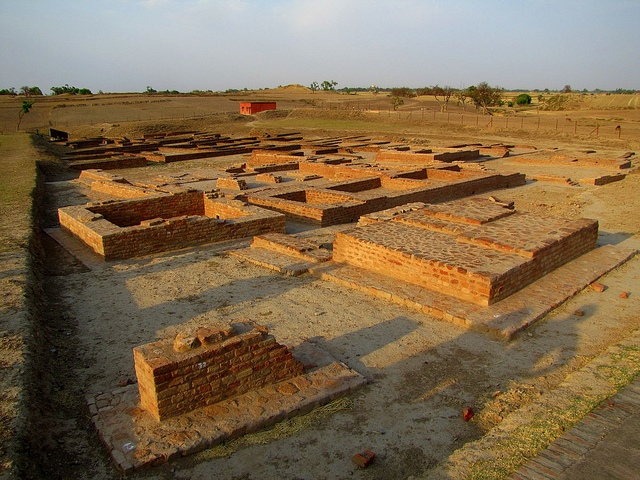Kaushambi is a rich historical town, visited by Buddha in the 6th and 9th years after his enlightenment.

In ancient India it was the capital of Vatsa Dynasty who were the ones amongst the sixteen Mahajanapadas of India.
The Puranas state that the Vatsa kingdom was named after a Kaśī king, Vatsa.[1] The Ramayana and the Mahabharata attribute the credit of founding its capital Kauśāmbī to a Chedi prince Kuśa or Kuśāmba. The Puranas state that after the washing away of Hastinapura by the Ganga, the Bhārata king Nicakṣu, the great-great grandson of Janamejaya, abandoned the city and settled in Kauśāmbī. This is supported by the Svapnavāsavadattā and the Pratijñā-Yaugandharāyaṇa attributed to Bhāsa. Both of them have described the king Udayana as a scion of the Bhārata family (Bhārata-kula). The Puranas provide a list of Nicakṣu’s successors which ends with king Kṣemaka.[2]
Gautama Buddha visited Koushambi several times during the reign of Udayana on his effort to spread the dharma, the Eightfold Path and the Four Noble Truths. Udayana was an Upasaka (lay follower) of Buddha. The Chinese translation of the Buddhist canonical text Ekottara Āgama states that the first image of Buddha, curved out of sandalwood was made under the instruction of Udayana.According to the Puranas, the 4 successors of Udayana were Vahināra, DanḍapāṇI, Niramitra and Kṣemaka. Later, the Vatsa kingdom was annexed by the Avanti kingdom. Maniprabha, the great-grandson of Pradyota ruled at Kauśāmbī as a prince of Avanti.[8]
Ashoka the great also gave importance to this place and positioned an Asokan Pillar in Kaushambi which has its inscriptions there in Pali. A Jaina temple was also constructed in Kaushambi. Both, the pillar and the temple still exists in there and the ruins of Vatsa empire and its University are till date being excavated by different Archaelogists.
At the time of Partition, a lot of affluent Muslim feudal families left for Pakistan. This is why we see a lot of dilapidated Havelis, Villas and old places there. Yet there is a substantial Muslim population there. Especially the Chail Tehsil is famous for valiant and brave Muslims who had been since olden days preferred the marshal and armed services from Mughal period up to the British dominion.
In last few decades, this district even had many renowned landlords and feudal families like that of Asharfi Lal Srivastava of Bara (a village at 6km milestone of Kaushambi and 8km ahead of Sarai Akil.). He himself was the Manager of a great landowner of Allahabad, K.P. Tandon, who had plenty of land in the colonial vicinage of Civil Lines. Gram Bara is presently looked after by Niranjan Lal Srivastava, grandson of Asharfi Lal and an attorney in Allahabad Court who lives in his ancestral bungalow in Allahabad city with his family.
Air: Nearest domestic airport is Varanasi .
Rail: Allahabad is well connected by all metros and major cities of India.
Road: Allahabad is well connected by road with major cities of India.
